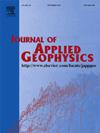Common-mode noise separation in distributed acoustic sensing vertical seismic profile data: A self-supervised deep learning approach with enhanced blind network
IF 2.2
3区 地球科学
Q2 GEOSCIENCES, MULTIDISCIPLINARY
引用次数: 0
Abstract
Distributed fiber-optic acoustic sensing (DAS) has emerged as a transformative technology for seismic exploration, offering adaptability, environmental sustainability and cost-efficiency, especially for vertical seismic profile (VSP) acquisition. However, practical applications face the challenges of diverse random noise, incoherent background noise, and weak target signals. Conventional supervised learning methods for noise separation are based on noise-free labels, which limits their applicability in seismic exploration. To address this gap, a novel label-free self-supervised learning approach, called dual-model self-supervised selective learning (dSSSL) is proposed to separate common-mode noise, specifically coherent noise typical of DAS-VSP data, from the desired signals. Our methodology leverages blind horizontal networks (BHNs) to mitigate the common-mode noise, and overcomes the identity mapping challenges inherent in U-Net with the introduction of the blind spot network (BSN). The effectiveness of our method is validated with synthetic DAS-VSP and field data from Janghang-ri, showing that the signal recovery is superior compared to conventional methods. This approach is promising for improving seismic data processing and interpretation in distributed fiber-optic acoustic sensing applications, particularly for vertical seismic profile acquisition.
求助全文
约1分钟内获得全文
求助全文
来源期刊

Journal of Applied Geophysics
地学-地球科学综合
CiteScore
3.60
自引率
10.00%
发文量
274
审稿时长
4 months
期刊介绍:
The Journal of Applied Geophysics with its key objective of responding to pertinent and timely needs, places particular emphasis on methodological developments and innovative applications of geophysical techniques for addressing environmental, engineering, and hydrological problems. Related topical research in exploration geophysics and in soil and rock physics is also covered by the Journal of Applied Geophysics.
 求助内容:
求助内容: 应助结果提醒方式:
应助结果提醒方式:


